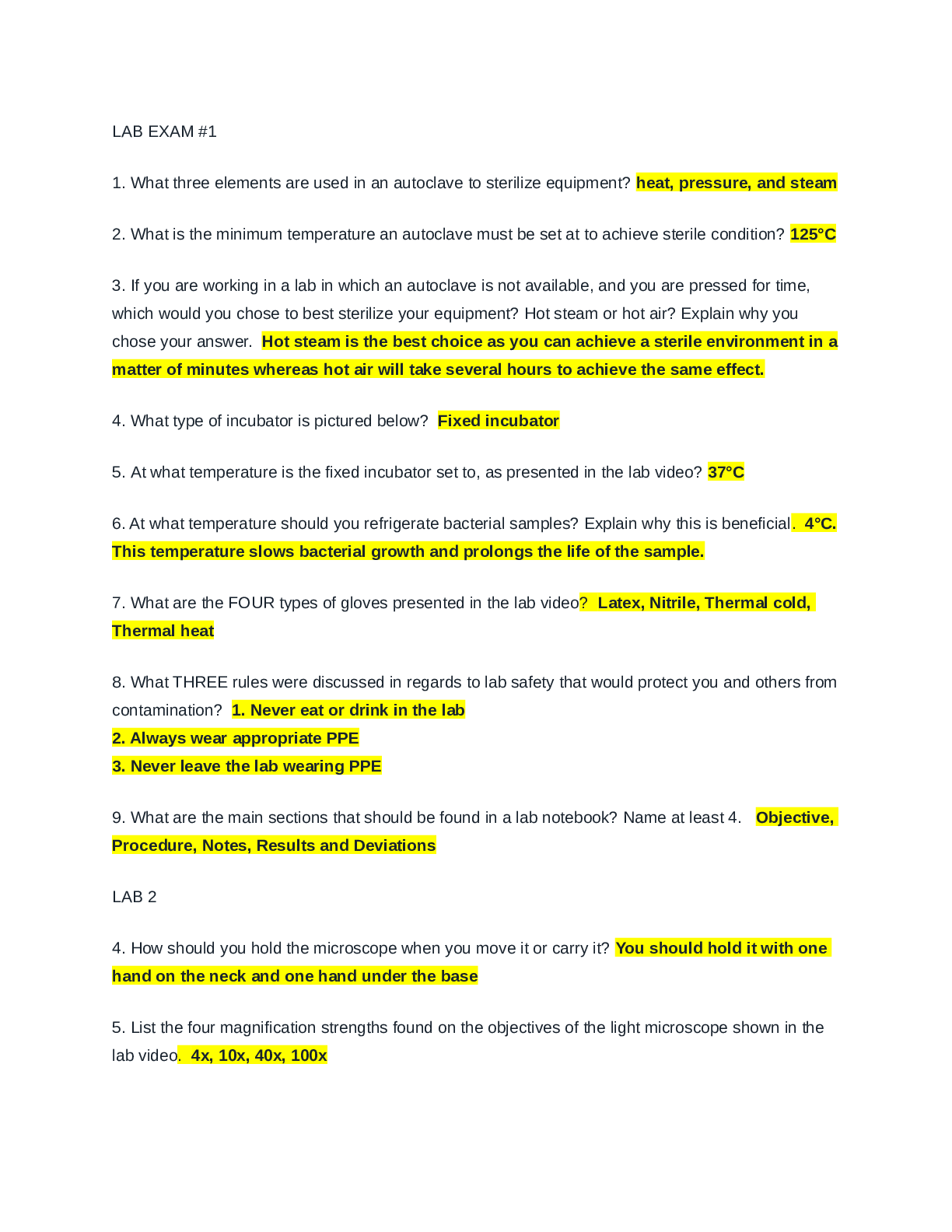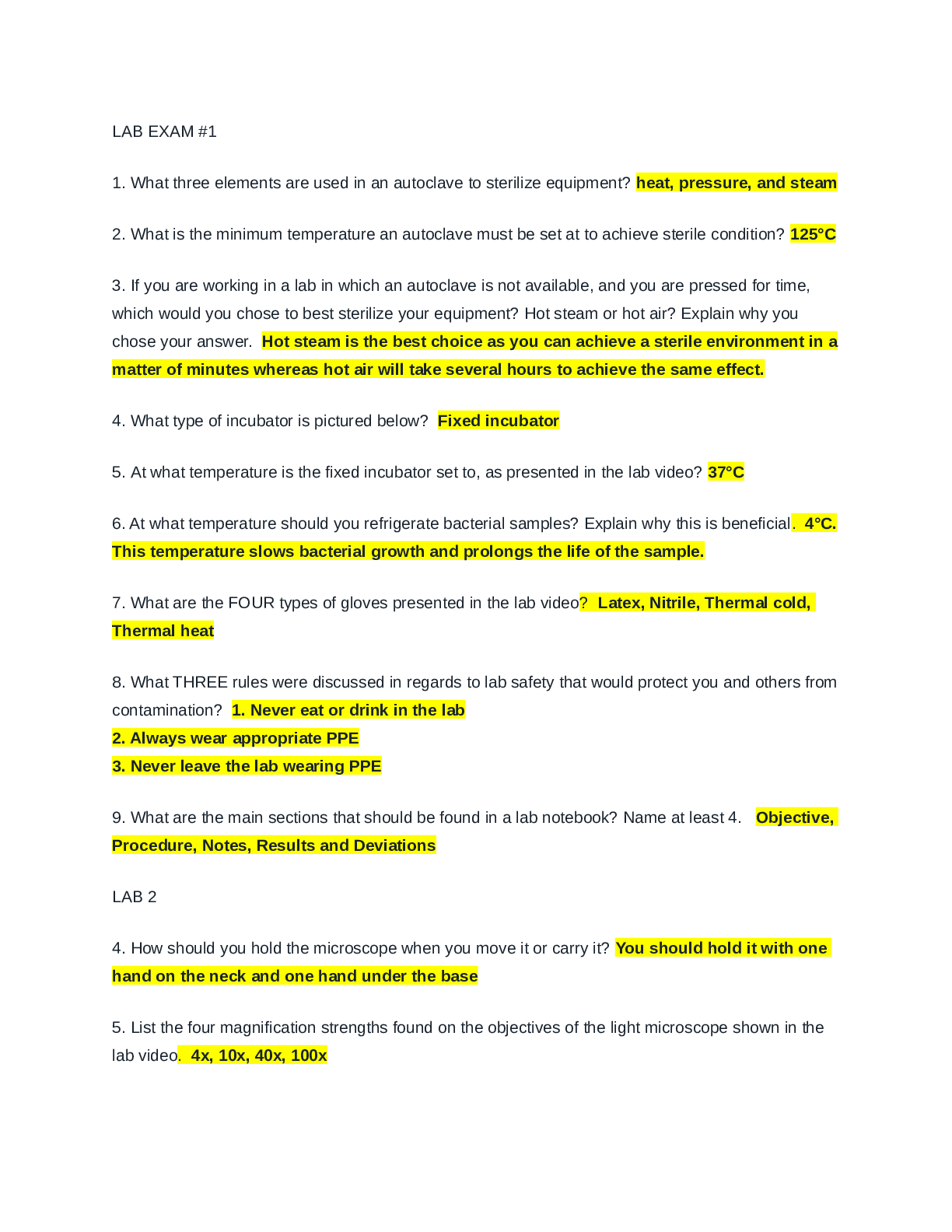MICRO- LAB- EXAM BIOD 171
Course
Education
Subject
Chemistry
Category
Questions and Answers
Pages
10
Uploaded By
ATIPROS
Preview 2 out of 10 Pages


Download all 10 pages for $ 7.00
Reviews (0)
$7.00
